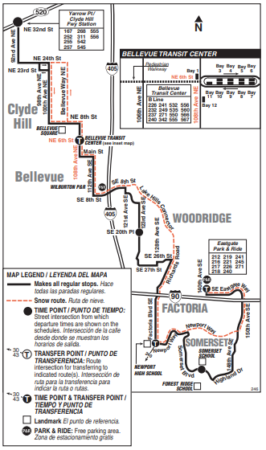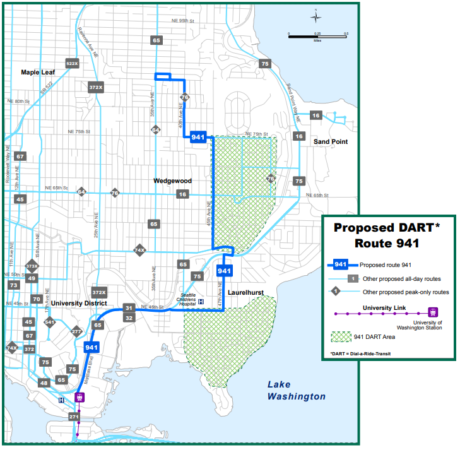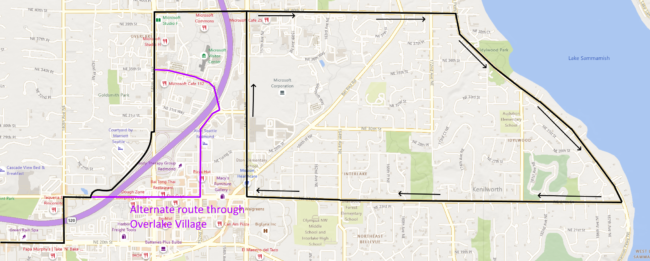The suspended all-day routes
 Route 246, one of the few all-day routes suspended entirely
Route 246, one of the few all-day routes suspended entirelyWe've reported extensively on Metro's darkest day, when the service reductions due to COVID-19 were refined, and the temporary service suspensions seemed less and less temporary. While the bulk of service reductions were applied peak-only service, there are a handful of all-day coverage routes that remain suspended: routes 22, 47, 71, 78, 200, 246, and 249. While many (if not all) of these routes were difficult to use or served areas where ridership is difficult to attract, some of the few people who rely on these routes are getting the shortest end of the stick. While everyone else gets their all-day service back in some form or another (albeit often with dramatic cuts to frequency and/or span of service), these riders have to wait for improved economic conditions to get their service back. Below I will describe these suspended routes, and suggest smarter ways to restore service that may make more sense than merely restoring service to how it was pre-COVID.
Route 22: This is largely a coverage route, running from Alaska Junction to a loop around Arbor Heights, serving Westwood Village and filling in the part of California Ave SW not served by the C-Line. Route 22 connected to nearly every route in West Seattle, giving it good potential to reach many places with a single transfer. Unfortunately, undoubtedly because it's difficult to use and doesn't get you many places on its own, this route is small enough to remain suspended.
The most sensible alternative to me is to extend the 125 to Arbor Heights in lieu of the 22. This fairly straightforward change will give the most isolated part of route 22 midday service, while leaving the 120 and 21 to cover the rest of the 22's service area. Extending route 22 would provide different but probably more desirable destinations (downtown Seattle and South Seattle College), while still allowing for connections at Westwood Village. Headways on route 125 are 30 minutes on weekdays and 45 on Saturdays, no Sundays (though Saturday would likely worsen to 60 minutes if extended), meaning an extended route 125 would meaningfully improve convenience and ridership without dumping a ridiculous quantity of service hours into it.
Route 47: This is a short route connecting the Summit neighborhood to downtown, with a northern loop on Summit and Bellevue avenues, and a southern loop on Pine and Pike streets. This route was formerly part of route 14, but was split off when route 14 was through-routed with route 1. Route 47 was actually eliminated in the 2014 cuts, but restored next June with funding from the Seattle Transportation Benefit District. Its old PDF timetable makes the route look comically short, and while provides a connection downtown that is more useful than looks on its map, nearly all of the routing in Summit is within a couple blocks of better, more frequent service on routes 8, 10, and 49. The most sensible iteration of route 47 might be something like route 3122 in Metro's long range plan network map. This route would be a local route filling in coverage around Summit, Eastlake, and Montlake, with connections to UW and Seattle Children's Hospital.
Routes 71 & 78: Having their familiar old 71 deleted entirely in Metro's Alternative 3 U-Link restructure proposal, Metro relented to the negative feedback and restored the 71 in the final draft. Since this left a hole in the Laurelhurst neighborhood, Metro added a very short route 78. As is often the case with late-round reversals that bring back routes that weren't designed with the modern route network in mind, routes 71 & 78 were infrequent (generally every 30 minutes or worse), didn't run as late (10 PM for the 71, and 6:30 PM for the 78), and ran 6 and 5 days/week, respectively. Route 71's coverage was essentially the same as the pre-U-Link route 71 north of UW (just truncated to UW Station), while route 78 covered much less area than the route 25 it replaced. Route 25 included a very long loop through the neighborhood traveling to the southernmost tip of Laurelhurst. While clearly overkill, route 78 replaced this with merely a pair of stops in the vicinity of NE 41st St and 42nd Ave NE, and then a layover at Seattle Children's hospital. This route was by far the most surprising to me, as I have a hard time understanding how it made sense to run a route through UW for just a pair of stops and Seattle Children's, especially when continuing on 41st St for six more blocks would bring you to Laurelhurst Park & Community Center, a destination that would provided at least a little transit ridership if there was transit to ride.

For these areas, Metro's DART route 941, which was part of the Alternative 3 restructure proposal, would be a better replacement. It would offer off-peak fixed route service to route 71's tail, but part of a more grid-like north/south alignment. Much of the missing coverage in Laurelhurst and Wedgwood would have been part of its DART service area, which would allow the few riders in this area to request a pickup in advance (rather than running fixed-route service there when no one is likely to ride). Service as originally proposed would have run hourly 5 days/week. Since service is consolidated into a single route, this would make it easier to bring half-hourly and weekend service to both areas as improving revenue allows.
Route 200: This was a local route in Issaquah that ran in a bit of a U" shape around I-90. Running off-peak only, it was fare free (provided by funding from the city of Issaquah). Being nearly impossible to use by commuters, its only ridership would be local residents making trips within Issaquah, or late morning/early afternoon trips into a nearby city via Issaquah TC. Not being a particularly useful route in its own right, this service would be better replaced by extending route 271's infrequent Issaquah tail to Issaquah Highlands via the northern part of route 200.
Route 246: Running weekdays only and once an hour, route 246 moves in the general direction of route 271 in Bellevue, hitting a grab bag of otherwise unserved neighborhoods in Factoria, Bellevue, and Clyde Hill. Without the ridership to support anything more than this bare-bones service, there aren't any obvious changes that would make this route more appealing to potential riders except perhaps a peak frequency boost (since this route served downtown Bellevue and multiple transfer points to Seattle, Redmond, and UW), which would help commuters.
Route 249: This route consisted of a string of lower ridership segments running from Overlake to South Bellevue. Route 249 connected to Overlake P&R, S. Kirkland P&R, and Bellevue TC. Despite these three major connections, service never ran better than every 60 minutes and extended deep into sparse neighborhoods, so ridership was not high enough to be restored in September.
 Overlapping service concept to replace route 249
Overlapping service concept to replace route 249While the ends of the route have very little ridership, the section in the middle from Overlake to Bellevue TC anecdotally had better ridership. Since East Link will run in the general vicinity in 2023, this may also be a good area to begin building ridership demand. So a good way to restore service in this area might be to run two routes (let's call them route 248 and route 249), overlapping in the highest ridership area in the middle. Both routes run every 60 minutes out to the ends, but coordinate to provide 30 minute headways in between. This way, both ends will still have service sized appropriately for ridership, and both ends still have a direct connection to all three transit hubs, with the more popular section getting double the frequency.
 A loop like this to W. Lake Sammamish Blvd could provide baseline service for this area at half the cost of the two-way route on the 249. Shown in purple is another routing option that serves Overlake Village and P&R.
A loop like this to W. Lake Sammamish Blvd could provide baseline service for this area at half the cost of the two-way route on the 249. Shown in purple is another routing option that serves Overlake Village and P&R.Additionally, the eastern part of the 249 is a long and circuitous tour through the neighborhood east of Overlake, running out to Lake Sammamish and back before arriving at Overlake TC. This routing makes little sense, and discourages trips connecting to other service at Overlake TC (and future Redmond Technology Station). Instead, a loop could serve the neighborhood at half the cost of running two-way service, and trips from the west would stop at Overlake TC prior to continuing out to Lake Sammamish. In this concept, route 248 and 249 would stop at Overlake TC, but only route 248 would continue through the Lake Sammamish loop.